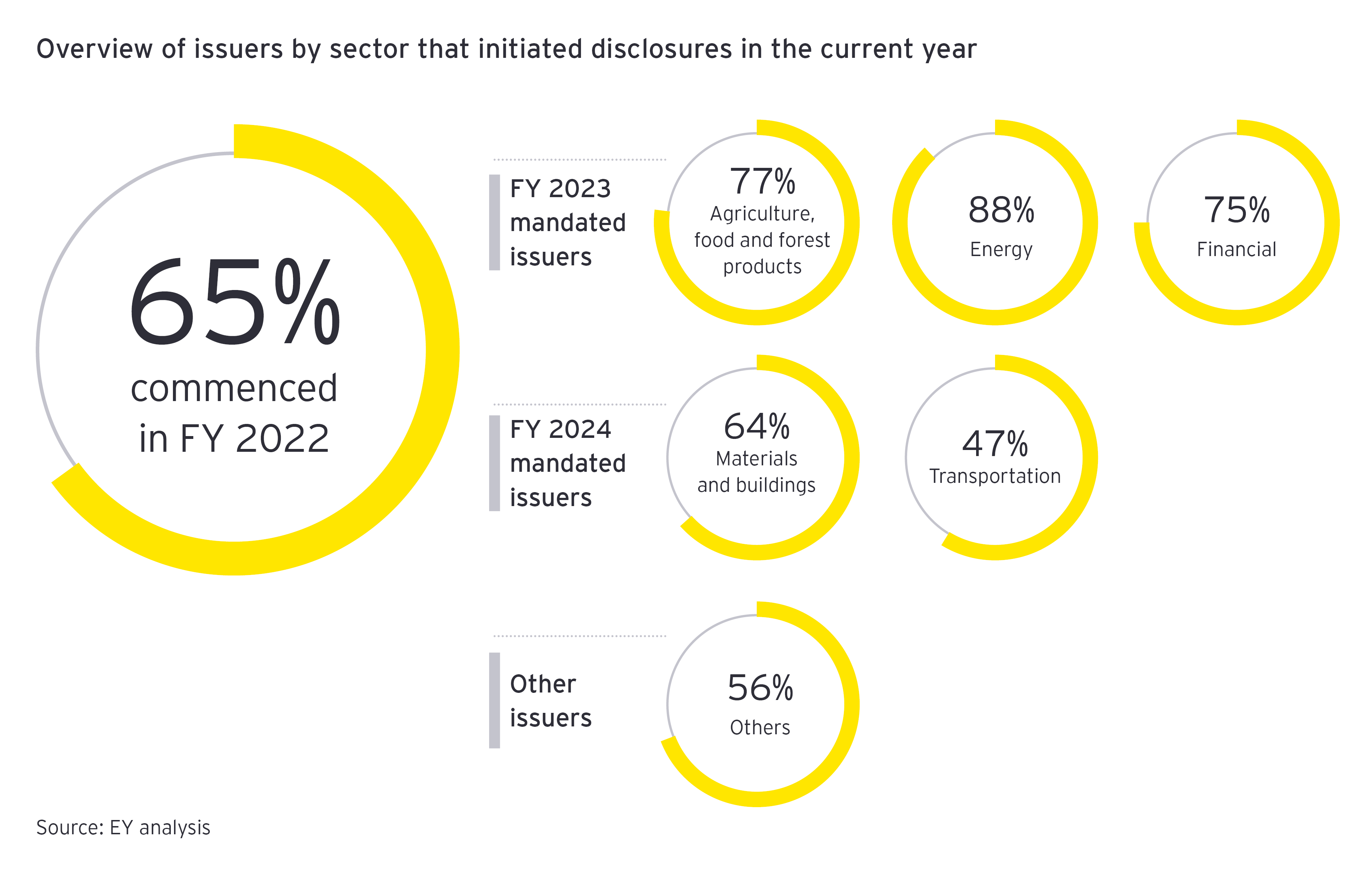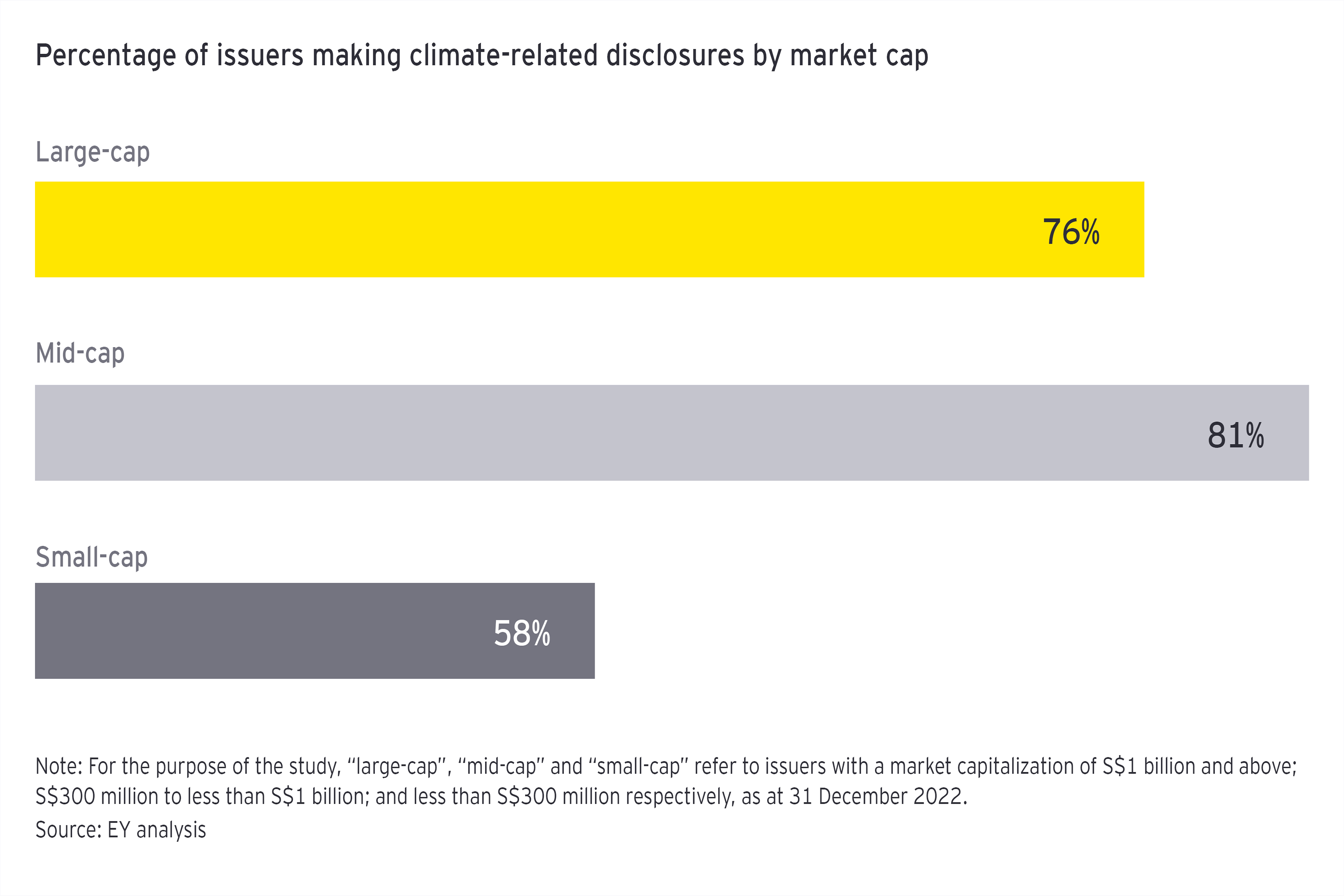EY refers to the global organization, and may refer to one or more, of the member firms of Ernst & Young Global Limited, each of which is a separate legal entity. Ernst & Young Global Limited, a UK company limited by guarantee, does not provide services to clients.
Explore our Offerings
-
Through enhanced corporate reporting, EY can support finance teams to meet demands for high-quality enhanced financial and nonfinancial information.
Read more
The way forward
Despite the issuers’ diverse approaches to climate-related disclosures, the study has identified five areas of improvement that are relevant and applicable to all issuers:
- Engage with stakeholders proactively in preparation for new climate reporting requirements.
- Strengthen understanding and assessment of the financial impact of climate-related risks and explore climate-related opportunities for long-term resilience.
- Leverage scenario analysis for better assessment of climate-related risks and opportunities.
- Embed climate change considerations into budgeting and strategic planning.
- Set meaningful quantitative targets and track performance.
Given the urgency of addressing climate challenges, the need for credible and transparent climate reporting is now more crucial than ever. Robust climate disclosures provide sophisticated insights into both material risks and value opportunities as well as help organizations transform and accelerate their decarbonization journey.






